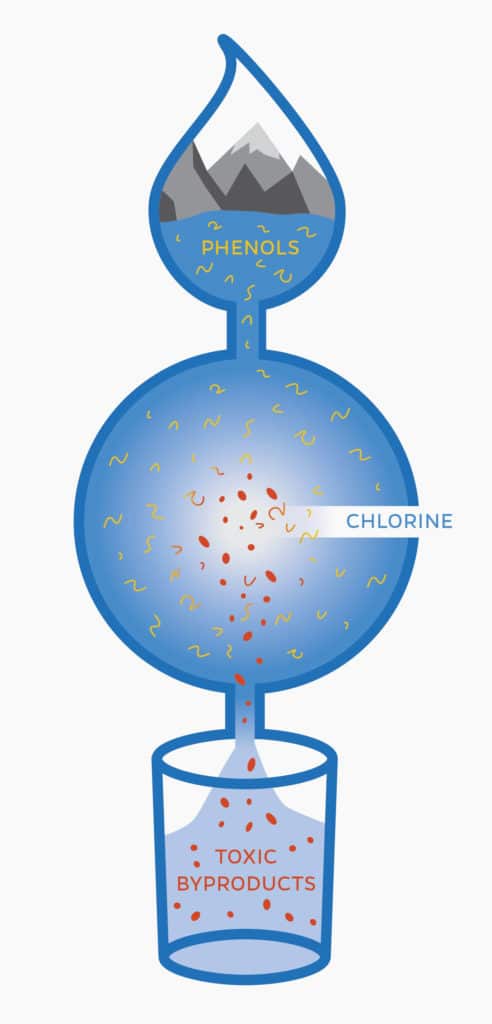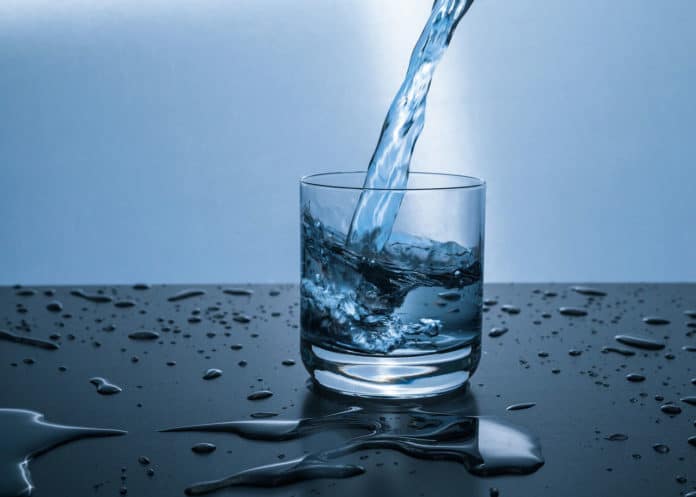Water chlorination is the process of adding chlorine or chlorine compounds such as sodium hypochlorite to water. This method is used to kill certain bacteria, and other microbes in tap water as chlorine is highly toxic.
There’s no uncertainty that chlorine is beneficial: chlorination has spared a great many lives worldwide from infections, for example, typhoid and cholera. But that process of killing potentially fatal bacteria and viruses comes with unintended consequences.
A new discovery by the Johns Hopkins University has shown that adding chlorine to drinking water creates previously unidentified toxic byproducts. The discovery of these previously unknown, highly toxic byproducts raises the question of how much chlorination is really necessary.

Phenols are chemical compounds that occur naturally in the environment and are abundant in personal care products and pharmaceuticals, are commonly found in drinking water. At the point when these phenols mix with chlorine, the procedure makes an enormous number of results. Current investigative chemistry methods, nonetheless, can’t distinguish and recognize these byproducts, some of which might be harmful and can cause long term health results.
During the study, scientists used a technique generally utilized in the field of toxicology to identify compounds based on their response with biomolecules like DNA and proteins. They added N-α-acetyl-lysine, which is almost identical to the amino acid lysine that makes up numerous proteins in our bodies, to detect reactive electrophiles. Past examinations show that electrophiles are harmful compounds mixes that have been connected to a variety of diseases.
Scientists first chlorinated water using the same methods used commercially for drinking water; this included adding excess chlorine, which ensures adequate purification yet, in addition, wipes out harmless smell and taste compounds that customers often complain about. After that, the group included the amino acid, let the water incubate for one day, and used mass spectrometry, a technique for investigating chemicals, to detect the electrophiles that reacted with the amino acid.
Their experiment found the compounds 2-butene-1,4-dial (BDA) and chloro-2-butene-1,4-dial (or BDA with chlorine attached). BDA is a very toxic compound and a known carcinogen that, until this study, scientists had not detected in chlorinated water before.
Carsten Prasse from Johns Hopkins University said, “this is a lab-based study, and the presence of these novel byproducts in real drinking water has not been evaluated, the findings also raise the question about the use of alternative methods to disinfect drinking water, including the use of ozone, UV treatment or simple filtration.”
“In other countries, especially in Europe, chlorination is not used as frequently, and the water is still safe from waterborne illnesses. In my opinion, we need to evaluate when chlorination is really necessary for the protection of human health and when alternative approaches might be better.”
“Our study also clearly emphasizes the need for the development of new analytical techniques that allow us to evaluate the formation of toxic disinfection by-products when chlorine or other disinfectants are being used. One reason regulators and utilities are not monitoring these compounds is that they don’t have the tools to find them.”
The researchers’ findings were published this past week in the journal Environmental Science & Technology.
